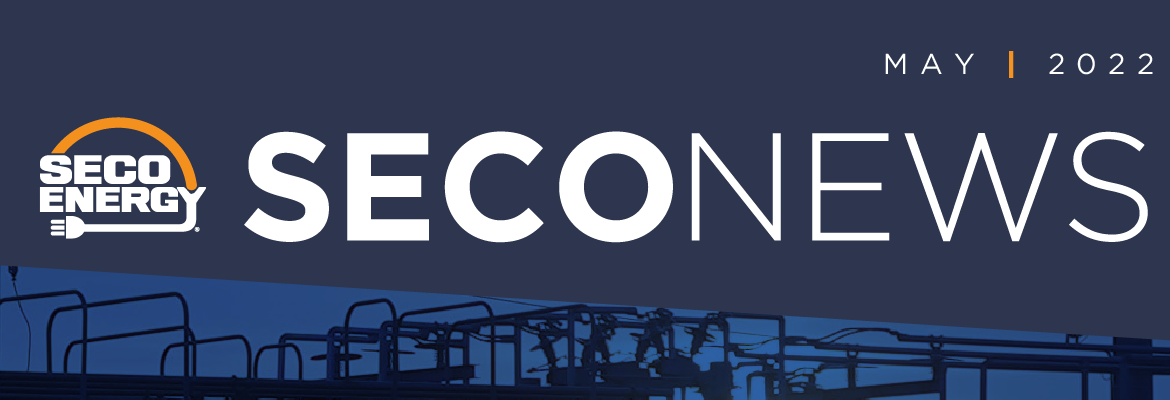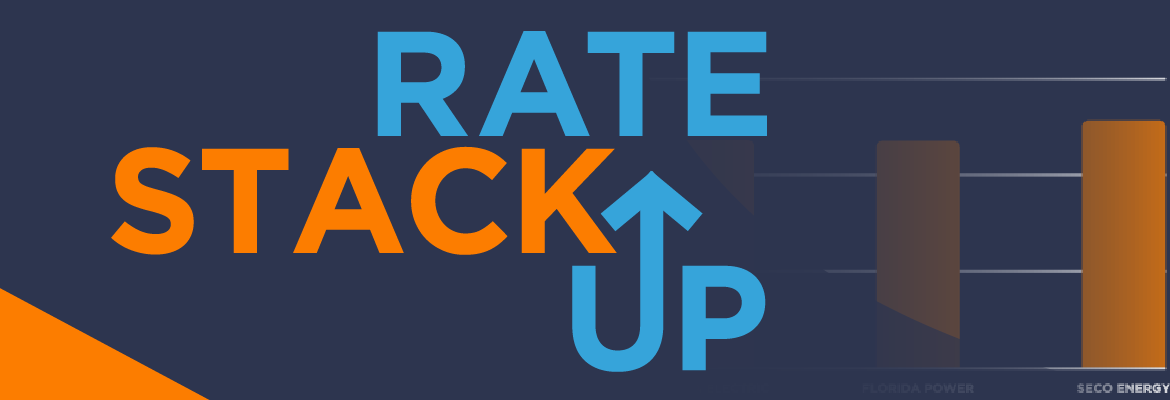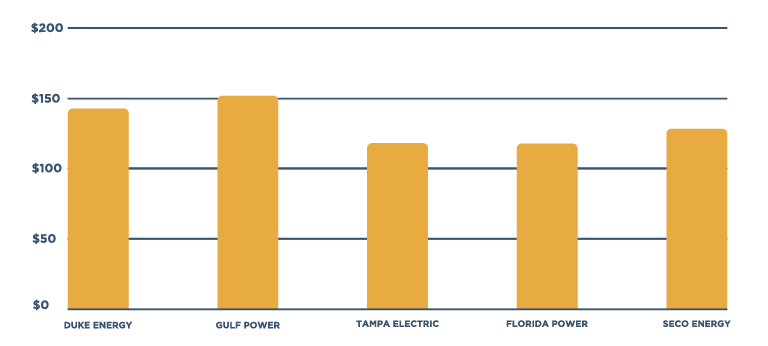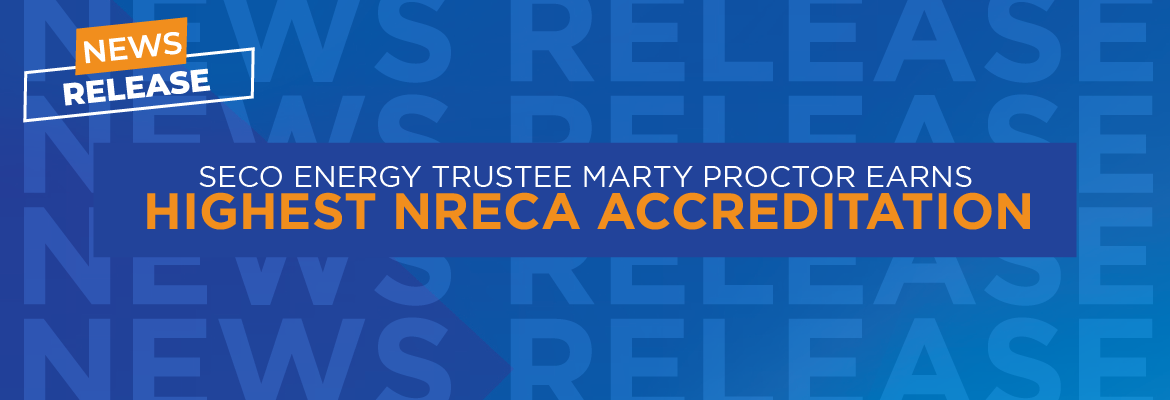SECO News May 2022
Over the last decade, SECO Energy has been on a fast-growth pace while operating with strong fiscal responsibility. Unlike other parts of the country, COVID did not slow the need for infrastructure expansion across SECO’s service territory.
The Sunshine State added more than 221,000 residents from other U.S. states between July 2020 and July 2021, according to the latest population estimates from the Census Bureau. That’s Florida’s largest gain in residents since 2005. Data compiled by Move.org shows Florida is the number one state people moved to in 2020 and 2021.
This expansion and growing demand for power will likely be our norm for a while. March 2022 challenged SECO with the highest monthly number of new services in 15 years. For SECO, this growth is occurring in the residential, commercial and industrial sectors.With the traffic and construction around Sumter County, residents might think that The Villages growth is highest across SECO’s service territory. That’s not the case. In 2021, Lake and Marion Counties grew 35 and 37 percent, respectively.
With the significant amount of growth in our three largest counties, the following three elements are necessary to viably keep pace with the activity in SECO’s service territory – and maintain competitive rates in the process: 1) financial capability, 2) a talented SECO team, supported by stable contract labor and consistent access to material and equipment, and 3) since we do not generate and transmit power, we must be able purchase competitively-priced wholesale power that we can sell to our members. These three elements are critical to our success.
SECO’s 2021 Annual Report was recently published at SECOEnergy.com, and the utility’s financial position is strong. But the growth and major investments that come with this growth during a time of record inflation challenge our ability to maintain flat rates while we preserve reliable service.
Last year, SECO members consumed over 3.68 billion kilowatt hours of electric power – an increase of almost 40 million kilowatt hours compared to 2020. To support the growth in our area and increasing demand for energy, our investment in facilities has topped over $1 billion. This ongoing facilities investment averages over $6 million per month. However, we are all aware that the Federal Reserve is anticipating several interest rate hikes this year. This has our attention since we know that SECO and our funders are not exempt from the cost impact of this policy.

Like all utilities, SECO continues to manage supply chain constraints due to the pandemic aftermath caused by shortages of raw materials, lack of labor, shipping delays and increased demand for utility products. The most challenging procurements are transformers, PVC pipe, meter boxes and equipment that relies on microchips.
As a result, SECO’s inventory planning and operating model has necessarily shifted to operating around available materials. These materials constraints increase cost of inventory and price escalation beyond normal inflation. In 2021, SECO absorbed immediate cost increases without negatively impacting members’ rates in hopes of quick economic recovery. 2022 is a different story.
Meeting business targets and member requests in today’s economic environment is gaining in complexity. SECO anticipates the continuation of cost increases and supply chain interruptions. Ultimately, these factors will result in members paying more for their energy needs. Roughly seventy cents out of every dollar spent is to purchase wholesale power. In partnership with our wholesale power provider Seminole Electric Cooperative, SECO strives to minimize impact on our members and keep rates affordable and competitive.
Without question, your electric service is supported by a large, robust and well-maintained infrastructure that distributes power generated by Seminole. In recent years Seminole has taken steps to discontinue operating one of its coal units and replacing it with a natural-gas facility. Seminole continues to operate its 2.2-megawatt community solar farm and is adding more renewable energy to its portfolio.
With these strategic changes, Seminole’s power production shifts dramatically away from 42% coal in 2020 to just 8% by 2024. Its use of natural gas increases from 28% in 2020 to 73% in 2024. Renewables are planned to double by 2024, but only account for 8% of the electricity Seminole generates for SECO and its other eight member cooperatives. When these strategic operational and environmental decisions were made prior to 2020, the cost of operating coal-fired units was not as cost effective as using natural gas to produce electricity – nor was it as environmentally effective.
Since 2020, domestic and global events and the resulting economics have driven energy prices up. Oil prices have been on the rise since mid-2020, and consumers are paying significantly more at the pump. The natural gas market is affected as well. Seminole’s shift to a larger portion of its portfolio generating from natural gas has financial consequences.
The Energy Information Administration estimates that the wholesale spot price of natural gas in 2022 will reach an eight-year high. That market volatility will affect the cost of Seminole’s production of power and ultimately will reflect on members’ bills.
This impact is already upon us. Members who read SECO News and review their electric bill each month are aware of a line item referred to as the PCA – or Power Cost Adjustment factor. This calculation allows SECO to adjust for the rise or fall of fuel costs in real-time without formally adjusting rates. This is a common utility practice. As a not-for-profit utility, it prevents the over or under collection of funds from consumers.
In April, the price of natural gas and SECO’s wholesale bill from Seminole caused SECO to raise our PCA from $121.00 per thousand kilowatt hours to $128.05. Despite this fuel pass through increase, I ask that you continue reading to learn how competitive SECO’s rates are to other utilities in our area and nationally and what other steps we are taking to reduce costs.
Sincerely,
Curtis Wynn
Chief Executive Officer
Rate Stack Up
Over the last 33 years SECO’s rates have risen just 30% or slightly less than 1% per year on average. According to the Energy Information Administration, the national average rate increase for electric utilities is 45%, one and a half percent per year, which is over a half percent more per year than SECO. The cooperative has clearly remained competitive.
2022 ANNUAL MEETING CONTEST
Did you miss our live 2022 Annual Meeting webcast on March 24? To watch the video, visit SECOEnergy.com and click on the Watch and Win! 2022 Annual Meeting Video homepage banner. Watch the video with the President’s Report from Richard Dennison and the CEO Report from Curtis Wynn and answer one question for a chance to win.
Which state did Curtis Wynn say was 2nd in the entire country in electric vehicle ownership?
1. California
2. Texas
3. Florida
4. New York
5. Arizona
Prizes:
$500 SECO Energy bill credit
$250 SECO Energy bill credit
Nest Learning Thermostat
HoneyWell Wi-Fi Thermostat
Apple TV HD
Complete the webform to enter the drawing. Prize winners will be drawn from all correct submissions on June 15, 2022, and winners notified by email or phone. SECO Energy membership must be active at the time of drawing.
Good luck!
AMI-Investment in Future Cost Savings
Moving into the future and understanding the supply chain and labor issues, the SECO Energy Board of Trustees has approved investing in technology that will save money and improve reliability over time.
SECO is one of a very few large, fast-growing utilities in the state or in the nation for that matter that has not deployed Advanced Metering Infrastructure (or AMI) throughout its service territory. The cooperative is conducting two pilot projects to test the viability of deploying AMI on our system and is preparing to decide on a vendor to deploy the AMI technology that will improve operations and reduce costs in a variety of ways.
Currently, SECO pays contractors to read meters on the more than 220,000 homes and businesses across the seven counties we serve. Because we don’t currently have Advanced Metering Infrastructure in place, many of our processes are manual – and costly.
With AMI, the projected savings are significant savings coming from eliminating the high cost of manually dispatching trucks and contracted employees to read meters every month and from reducing the time and cost it takes to more quickly detect and restore power outages.
Learn more about AMI benefits for you, our members, in the Annual Meeting video posted on our website, Facebook and YouTube. Watch for updates in SECO News and at SECOEnergy.com.
Read the full May 2022 SECO News online.











